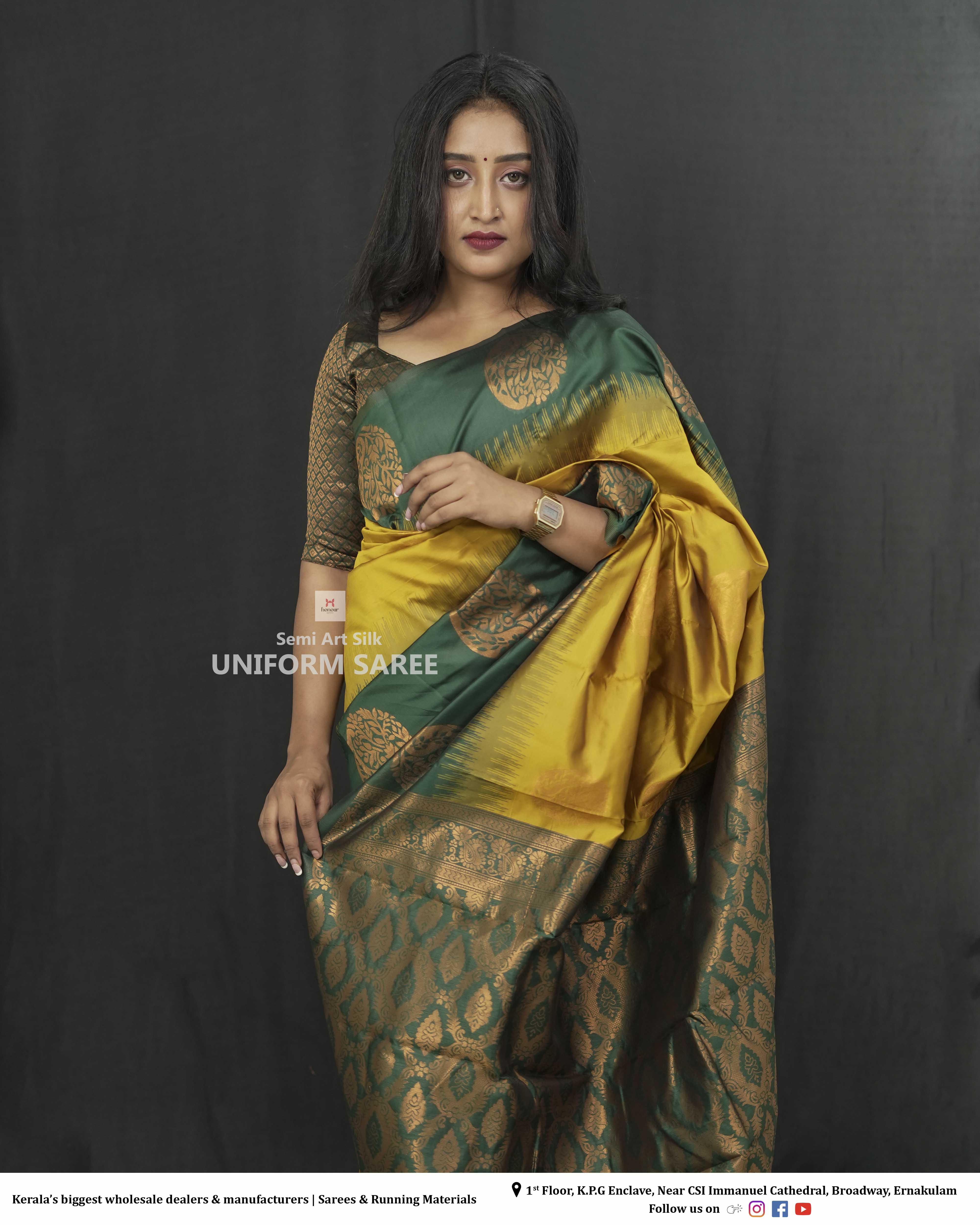 Uniform Sarees
Uniform SareesChoosing the right uniform colours for teachers can significantly elevate the classroom environment, fostering a positive atmosphere for both educators and students. In this article, we will delve into various innovative colour selections that not only align with professionalism but also facilitate engagement and learning. From exploring the psychological effects of different colours to discussing current fashion trends in teacher attire colors, this blog aims to provide insights into how effective colour choices can enhance the learning experience.
Throughout the article, you will discover practical tips for selecting unique classroom uniform styles that resonate with the school's ethos. Whether it's adopting a bold palette or integrating subtle tones, color selection plays a pivotal role in shaping the educational environment. By the end of this article, you will be equipped with the knowledge necessary to make informed decisions on uniform colour selection for teachers.
The psychological impact of colours in learning environments is profound. Various studies have shown that colours can influence cognitive performance and emotional responses. For educators, employing the right uniform colours can significantly uplift the classroom atmosphere, making it a more engaging space for students. Research indicates that bright and warm hues such as yellow or orange can stimulate enthusiasm and creativity, while cooler shades like blue promote calmness and concentration.
Moreover, implementing a cohesive colour scheme for teacher uniforms can enhance team spirit and create familiarity amongst students. Schools may choose a palette that reflects their core values or mission, thus reinforcing the school culture while positively impacting students' mood and engagement levels.
As schools move away from traditional colour schemes, innovative options for teacher attire colors are emerging. Educators can express their individuality through colour selections that align with the institution’s ethos. For instance, a vibrant coral or a sophisticated teal can elevate the sense of professionalism while adding flair to classroom attire. Unique colour palettes can juxtapose personal style with the role of an educator, combining fashion with functionality.
Consider incorporating accent colours that allow teachers to stand out without straying too far from a coherent look. A bright scarf or cufflinks in a complementary shade makes uniforms far less monotonous and enhances the overall aesthetic. The key here is to strike a balance between professionalism and self-expression, ultimately contributing to a more stimulating educational atmosphere.
Uniform styles are just as vital as colour—in fact, both aspects interact to reinforce a particular image that the school intends to project. There’s a spectrum of classroom uniform styles from formal blazers to casual attire, and colour choices can influence how these styles are perceived. For example, while dark colours may evoke a sense of seriousness, light colours can convey approachability and friendliness.
Comfort is paramount as educators often find themselves engaging in various activities throughout the day. Selecting unique colours should therefore complement comfortable, functional materials that support diverse teaching styles. Schools might consider breathable fabrics in bright tones or muted hues, ensuring teachers feel confident in their attire while actively participating in classroom dynamics.
The standards of educator fashion trends have evolved over the years, with contemporary styles making their way into teacher uniforms. It’s essential for educators to feel good in their attire, which not only boosts confidence but also positively influences the classroom vibe. Trends now incorporate a mix of professionalism and casual elegance, utilizing striking patterns and color blends.
To incorporate fashion-forward elements into uniforms, educators can mix and match styles—utilizing coloured blouses with neutral trousers or topped with fashionable outerwear. Accessories also play a crucial role in elevating the overall look. By weaving in fashionable elements while remaining thematic, teachers can embrace their unique style without compromising professionalism.
Selecting the right colour scheme for uniform colours for teachers should be a thoughtful process. One practical tip is to involve both teachers and students in discussions about uniform colours. Feedback can provide insights into preferences and ensure that the chosen palette resonates with the entire school community.
It’s also crucial to consider elements such as seasonality and existing school branding. A school may opt for warm colours in the fall and winter months, while bright, lively tones may be more appropriate for spring and summer. Additionally, aligning the colour scheme with the school's identity can help reinforce a cohesive brand image, enhancing school spirit and unity.
In conclusion, choosing unique uniform colours for teachers is not just about aesthetics; it’s a strategic decision that can significantly influence the classroom atmosphere. Understanding how colour interacts with the learning space can open new avenues for enhancing student engagement. We invite you to share your own thoughts or experiences with teacher attire colours in the comments below. How have colour choices influenced the atmosphere in your school? Let’s discuss!










Or login with